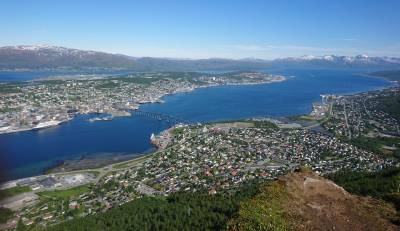My Blog - Jeff Clarke
Updates and photos from around the world on my travels both through pleasure and work
Far North
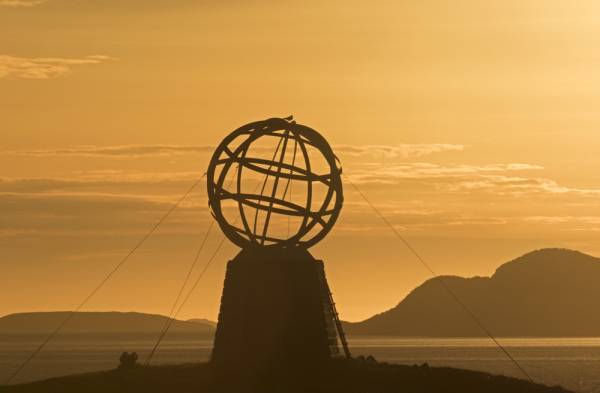
All images used in this blog are genuinely from the tour. All copyright remains with the photographer. Click on images to enlarge to full size.
‘Spitsbergen’ – that name has played around in my mind since I was a youngster. The very idea of that frozen landscape captured my imagination and created a lifelong desire to go there. At the back end of June Adele and I were once again boarding the Fred. Olsen Black Watch, where I would be carrying out my job as Wildlife Speaker. This time we would be journeying 79 degrees North to the Svalbard archipelago.
As we steamed out of heatwave Liverpool the weather forecast looked perfect for our journey up through the Sea of Hebrides and the Minch.
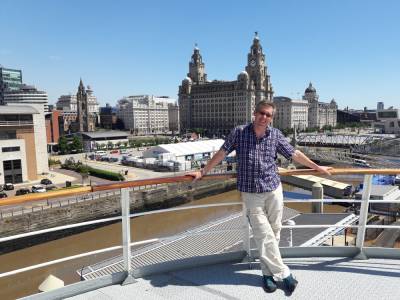
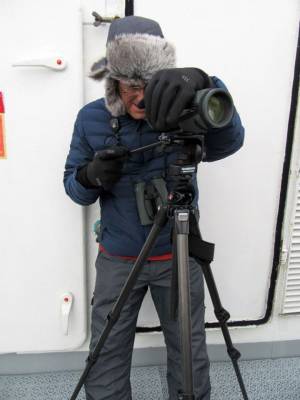
Spot the Difference - Liverpool (left) Spitsbergen (right) © Adele Clarke
I was up early to take in the delights of a flat calm sea. It wasn’t long before an explosion in the water declared the presence of a breaching Minke Whale. It was a fair distance from the ship but as it continued to breach I secured a sequence of images.
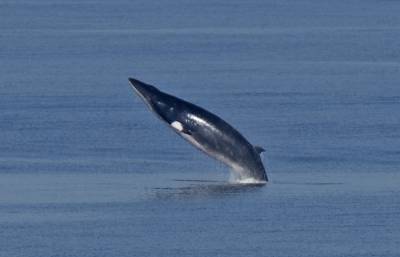
Minke Whale breaching - Sea of Hebrides © Jeff Clarke
I then gave my first lecture on Whales and Dolphins and for once promised people that if they came up on deck I would show them a whale. I was true to my word.
More Minke Whales showed, as did a good variety of dolphins, including a mother and calf Risso’s Dolphin. However, the big moment would come as we approached the top end of the Sea of Hebrides just before the Isle of Skye. A disturbance ahead revealed a sizeable pod of dolphins and there, just beyond them, the Iconic dorsal fins of a pod of Orca.
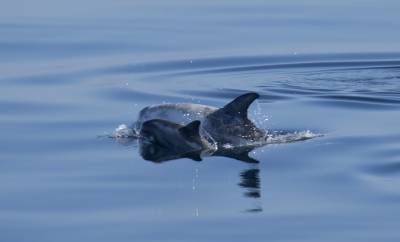
Risso's Dolphin and Calf - Sea of Hebrides © Jeff Clarke
The Short-beaked Common Dolphins, some 200 of them, were clearly agitated by the presence of the Orcas and were leaping and splashing everywhere. In contrast the Orcas appeared rather relaxed and spent considerable periods lazily at the surface. They were a group of 5. A mature bull and four females. My images suggest these Orcas may belong to the threatened ‘West Coast Community’ and the bull is known as Comet. Alternative opinions are welcome.

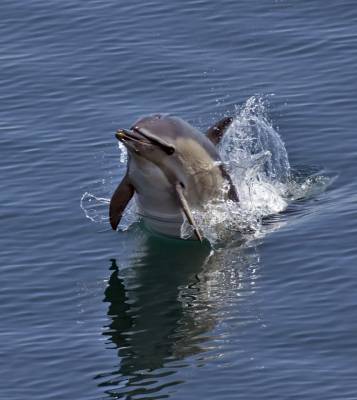
Orca pod (left); Short-beaked Common Dolphin (right) - Sea of Hebrides © Jeff Clarke
At times the waters of the Little Minch and the Minch itself were mirror calm. This aided our observations to such an extent that by the time the day was done we had recorded some 150+ Harbour Porpoise. A species easily hidden by even a slight sea, and I can’t recall ever seeing so many in a single day.
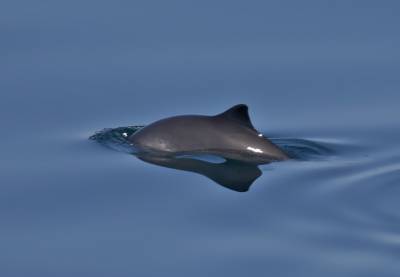
Harbour Porpoise - Sea of Hebrides © Jeff Clarke
Seabirds we obvious throughout the day, including Manx Shearwaters and hundreds of European Storm-Petrels, but few were really in photographic range except for the fulmars and the Gannets.
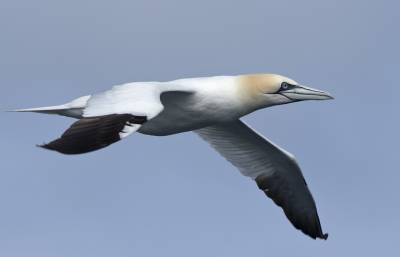
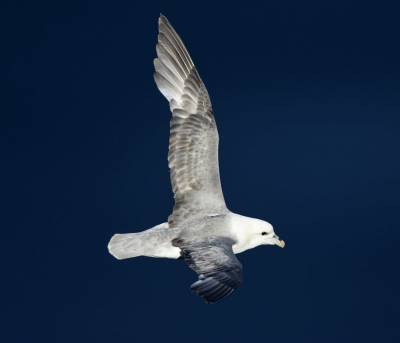
Northern Gannet (left) & Northern Fulmar - light phase (right) © Jeff Clarke
Early next morning I awoke to leaden skies, but the seas were still calm. We passed the northern tip of Shetland to our starboard side well before 7.00am and soon the birds like the auks, Kittiwakes and Bonxies began to thin out, leaving us once again with just the Fulmars and the Gannet’s for company. A mis-timed breakfast meant I missed the next Orca pod. This became something of a recurring theme as it happened again the following day whilst giving my second lecture.
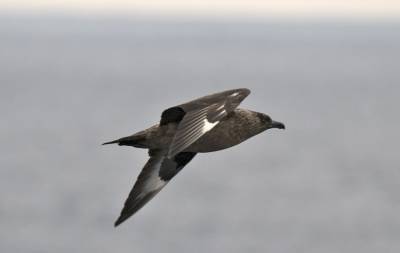
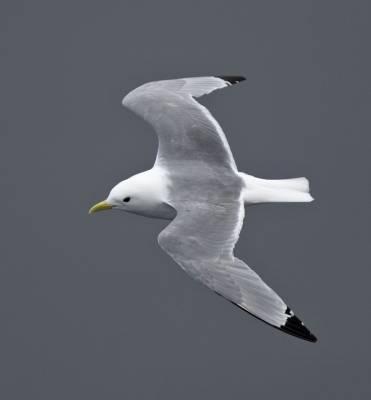
Great Skua (left) & Kittiwake (right) © Jeff Clarke
We crossed the Arctic Circle close to 10pm on the evening of the 30th August and the following day we docked at Leknes on the Lofoten Islands. Adele and I strolled to the nearby village of Gravdal. As we approached the picturesque Church we were overflown by a White-tailed Eagle. An examination of the woods revealed a colony of Fieldfares some of whom were ‘poop’ bombing a nearby Magpie. The Wagtails here were ‘White’ with paler backs than their UK relatives.
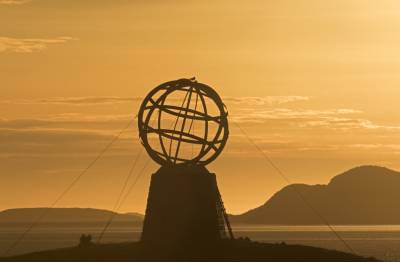

Arctic Circle Sculpture at Vikingen Island (left) Adele crosses the circle (right) © Jeff Clarke
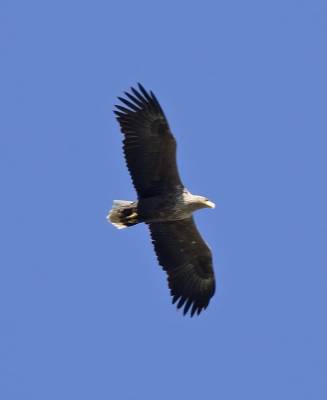

White-tailed Eagle (left) White Wagtail (right) © Jeff Clarke
A little later I explored a couple of wetlands close to the ship, the nearest, Svanvatnet, was encircled by a speedway track and held a variety of wading birds including Ringed Plovers and noisy Common Redshanks. I then crossed the nearby highway to explore the Storeidvatnet as a couple of Curlew passed overhead. I couldn’t get anywhere near the shore, but the waterbody held a large variety of birds including a number of Slavonian Grebe. If you visit this location a spotting scope would be useful.
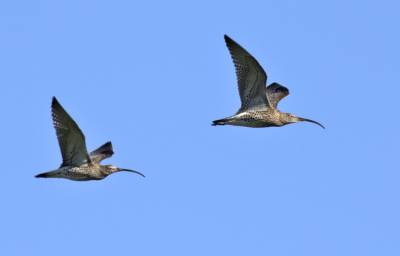

Eurasian Curlew (left) & Common Redshank (right) © Jeff Clarke
That evening we continued our journey northward along the Norwegian fjord system heading for Tromso. Once again, we enjoyed sublime calm conditions this coincided well with a diversion into Trollsfjord. This narrow body of water was a great place for Black Guillemot and the waters were laden with jellyfish including the ‘Lion’s Mane’.

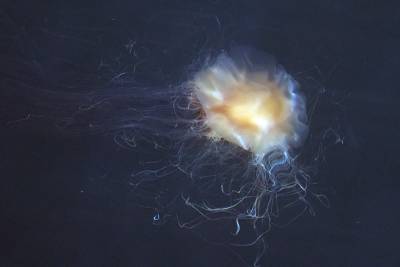
Black Guillemot (left) & Lion's Mane Jellyfish (right) © Jeff Clarke
Under a clear sky at ‘midnight’ the sun bathed a golden glow across the still waters of the Norwegian fjord system and the mirror calm surface, disturbed only by the ripples of Black Watch’s bow, created a serene image.

Near Midnight approaching Tromsø © Jeff Clarke
The following morning we docked in Tromsø. We took the cable car at Fjellheisen to take in the Tromsø city viewpoint. It looked fabulous set among the lakes mountains and fjords on such a stunning day. It was here we recorded our only Ring ouzel of the trip. As I scanned over the city below I noticed a large lake ‘Prestvannet’ situated centrally. It looked interesting and I decided to pay it a visit. This proved to be a most profitable decision.
As I circumnavigated Prestvannet a encountered a superb selection of birds. Fieldfares and Common Redpolls were abundant in the surrounding woodlands, but it was the birds on the lake that really captured the attention. The dominant birds were the colony of Common Gulls. There were also tern colonies comprising both Arctic and Common Tern. The latter species at one if its most northerly outposts.
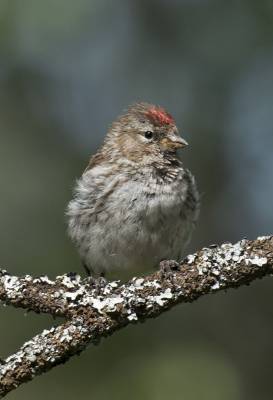
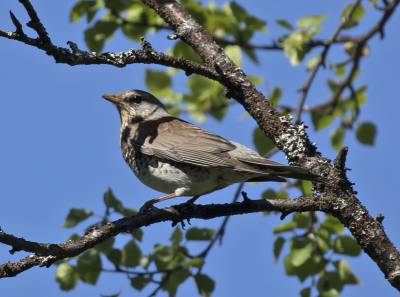
Common Redpoll juv. (left) & Fieldfare (right) © Jeff Clarke
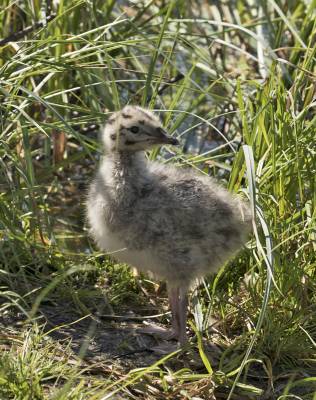
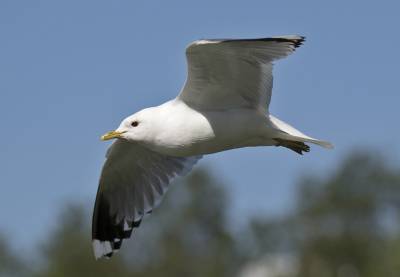
Common Gull chick (left) & Common Gull ad. (right) © Jeff Clarke
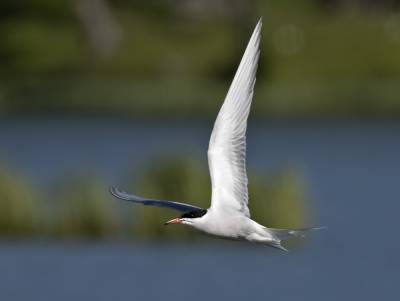
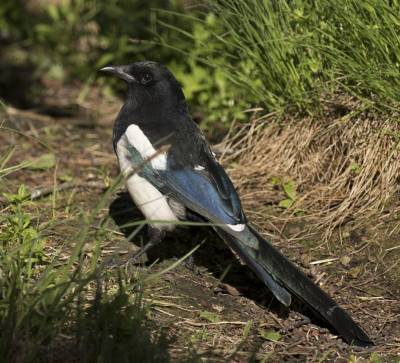
Common Tern (left) & Eurasian Magpie (right) © Jeff Clarke
Ducks were present on the lake in good numbers, many broods of Mallard were present as was one brood of Tufted Duck, but I was particularly delighted to find several broods of Eurasian Wigeon being tended by their vigilant female parent. I also came across a drake of clear mixed genetic heritage, Mallard x Wigeon.

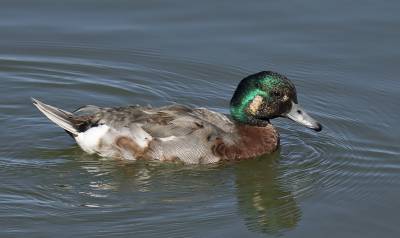
Eurasian Wigeon and ducklings (left) & Hybrid drake Mallard x Wigeon (right) © Jeff Clarke
All this was very diverting but by far the outstanding feature of Pestvannet is the presence of 10+ pairs of Red Throated Diver. Resplendent in breeding garb and frequently yodelling their weird melancholic duets across the lakescape. It’s pretty difficult to get close to Red-throated Divers in the UK, especially in the breeding season, so it was a rare pleasure to spend so long in close company with them here in the centre of Tromsø. Without doubt one of the highlights of my trip and the light was fantastic for photography too.
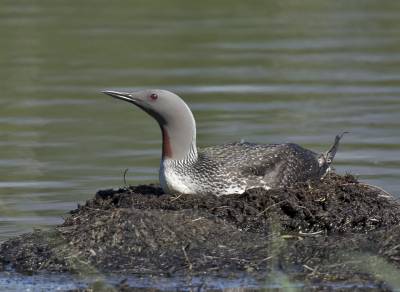
Red-throated Diver © Jeff Clarke
We docked in Honningsvåg early next morning. The weather was again fabulous. so I decided to hike my way to the top of mount Storefjell that overlooks the town. On the edge of town I photographed a Redwing and on finding a route up the mountain immediately noticed Dewy Ringlets twirling across the low vegetation. Fresh Reindeer droppings gave me hope of finding them near the peak. My hope was misplaced but I could see a herd grazing atop a mountain across the bay. A strange weather phenomena then occurred, sea fog piled in with low cloud and an accompanying stiff wind picked up at low levels ruffling the sea to whitecaps down by the ship. I phoned Adele and persuaded her to stand on top of the ship so I could take a picture. I climbed down part way to find a good vantage point. There she was, persishingly cold, bundled up and multi-layered, whilst near the top I was in a T-Shirt, positively sweating. Weird weather indeed. The sea fog persisted throughout the rest of the day and largely obscured our view of North Cape as we steamed for Svalbard.

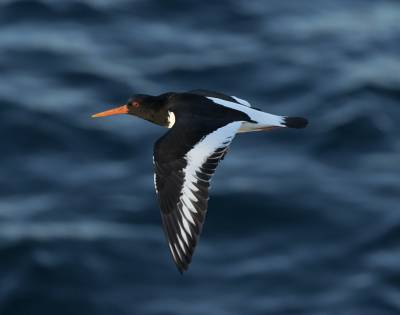
Redwing (left) & Eurasian Oystercatcher (right) © Jeff Clarke
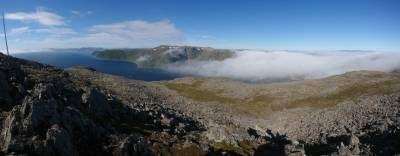
Honningsvåg weather rolling in © Jeff Clarke
We passed Bear Island 12 miles to the east the following morning. To be fair we it could have been 100miles, it would have made no difference as we were shrouded in fog. It finally lifted as I ate my lunch and I timed it perfectly to miss the first Blue Whale. The Fulmars had changed markedly. Now the majority were of the ‘Blue’ form and the flat bright, but not sunny, light was perfect for photography. The gulls had changed too. Now we had Glaucous Gulls for company, some rested on the ship. The guillemots were also transforming. Common Guillemots were still present in numbers but they were now being outnumbered by Brunnich’s Guillemots.


Northern Fulmar - blue phase pale form (left) & Brunnich's Guillemot (right) © Jeff Clarke
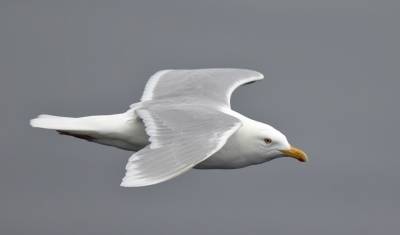
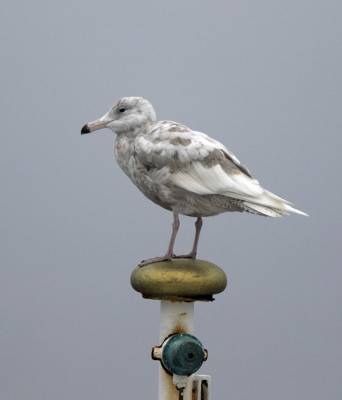
Glaucous Gull ad. (left) & Glaucous Gull 2nd Sum. (right) © Jeff Clarke
As the vestiges of mist finally cleared we were surrounded by ‘blowing’ whales. We felt like we had hit the motherload and over the next few hours we sighted and impressive total of 31 Fin, 25 Hump-backed and 13 Minke Whales, with a further 10 unidentified rorqual whales. On top of this we added 3 more Orca and 63 White-beaked Dolphin.
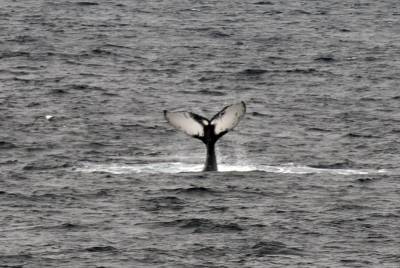
Hump-backed Whale - tail-lobbing near Bear Island © Jeff Clarke
Early the following morning we anchored in Billefjorden just off the deserted Russian mining town of Pryamiden. A RIB boat tour out to the nearby Nordenskioldbreen glacier brought close up views of Brunnich’s Guillemots, but no Polar Bears. A walk around Pyramiden later on brought some unexpected good fortune. I hadn’t been ashore very long when the first of 3 different Arctic Foxes crossed my path. Clearly the huge colony of Kittiwakes on the former residential buildings not only provide the foxes with plenty of food, they have done so for a considerable period of time given the depth of the nests on the ledges.

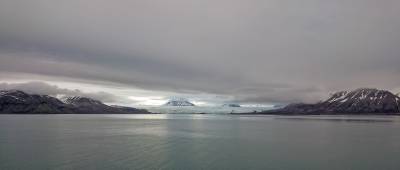
Black Watch anchored off Pyramiden (left) Nordenskioldbreen Glacier (right) © Jeff Clarke
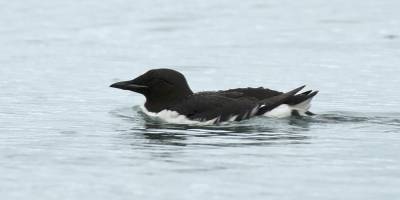
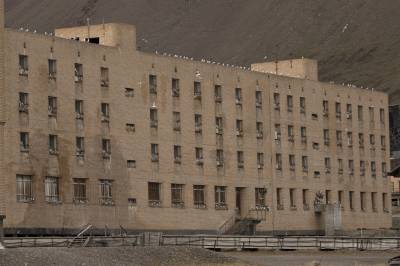
Brunnich's Guillemot (left) & Kittiwake 'hotel' - Pyramiden (right) © Jeff Clarke
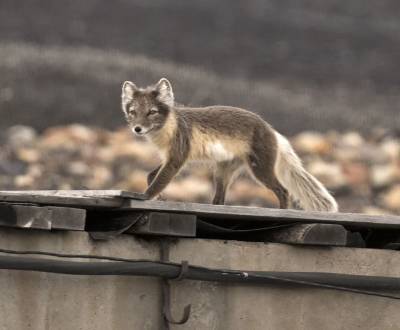

Arctic Foxes - Pyramiden © Jeff Clarke
Snow Buntings abounded, as they did at other settlements around Spitsbergen, but I missed the Ptarmigan seen by others a little earlier. As I tried to get closer to some Svalbard Barnacle Geese and a group of Pink-footed Geese with their goslings a small bird shot past me with a deep redpoll-like call. I followed it to its nest site on a metal stairwell. It was an Arctic Redpoll. They are not supposed to be nesting in Spitsbergen but this pair clearly didn’t know that.
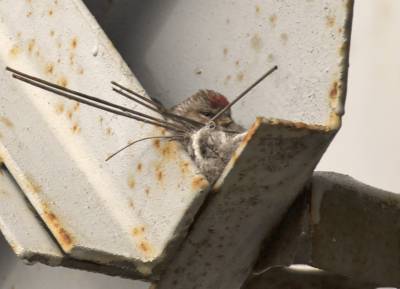
Arctic Redpoll nesting - Pyramidden © Jeff Clarke
Shortly afterwards a fellow birder called Pat called me up to a vantage point. She was watching a pod of 5+ Beluga slowly making their way out of the fjord, The view was decent through the scope but too far for photography. Not that I really cared, these were my first Belugas and I was excited just to see them sparkling in the sunshine as they cavorted in the increasingly choppy waters.
We finished the day with some scenic cruising. A small group of folk at the back of the ship got lucky with a Polar Bear sighting. I was at the front. You win some, you lose some. I then headed up to the bridge to do some commentary. The scenery was spectacular and I yearned for a longer look.

Tunabreen Glacier in Templefjorden © Jeff Clarke
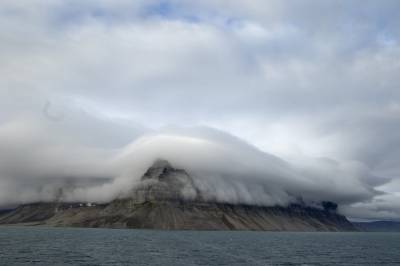
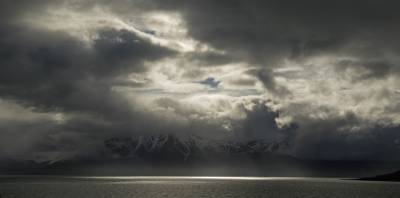
Views of a brooding Spitsbergen © Jeff Clarke
We awoke at dock in Longyearbyen. I was escorting a Catamaran trip to Barentsberg. On route the light and calm conditions aided me in getting some shots of the Little Auks and the Brunnich’s Guillemots. Barentsberg is an occupied Russian mining settlement. Following a short tour we had a few minutes of free time and I snatched some shots of the birds on the beach. Here I unexpectedly found some Iceland Gulls, both adult and immature birds. My main focus was on the summer plumaged Purple Sandpipers and a pair of Snow Bunting. I rapidly ran out of time and apart from a momentary stop to take a snatched shot of overflying Barnacle Geese, I had to leg it back to the Catamaran. The rehydrated expedition food served on the return leg was surprisingly tasty. As we powered back I managed my only half-decent image of a Puffin in the whole trip.

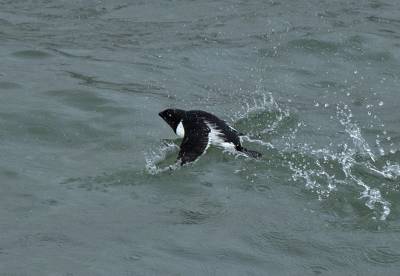
Brunich's Guillemots (left) & Little Auk (right) © Jeff Clarke
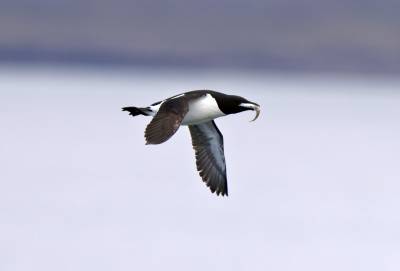
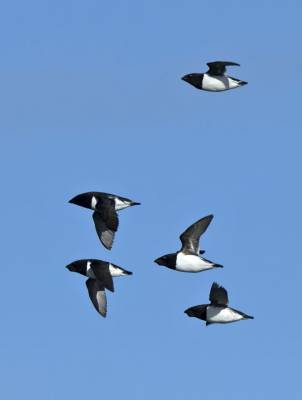
Brunich's Guillemot (left) & Little Auks (right) © Jeff Clarke
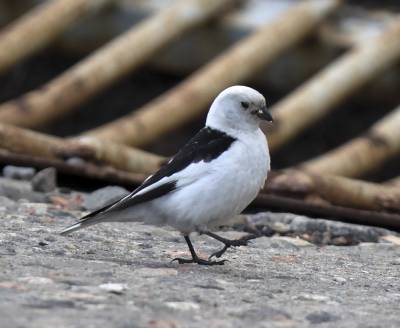
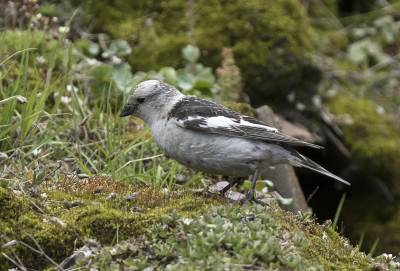
Snow Bunting male (left) &Snow Bunting female (right) © Jeff Clarke


Iceland Gull 2nd sum. (left) & Purple Sandpiper Ad. sum. (right) © Jeff Clarke
I wanted to spend some time in Longyearbyen, but it ran out all too soon. I snatched a few shots of the Common Eiders in the harbour and then it was time to climb aboard once again. It seemed barely had we arrived than we were saying goodbye to Spitsbergen. How frustrating!
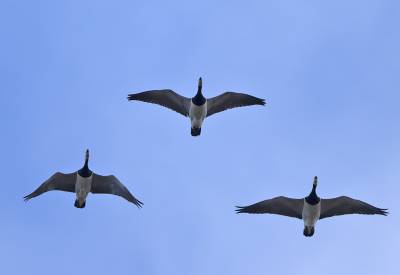
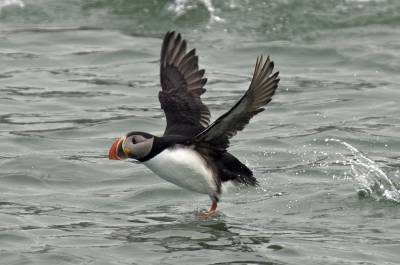
'Svalbard' Barnaccle Geese (left) & Atlantic Puffin (right) © Jeff Clarke
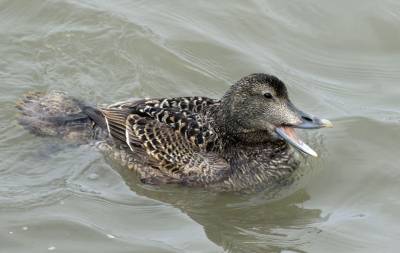

Common Eider female (left) & Common Eider male (right) © Jeff Clarke

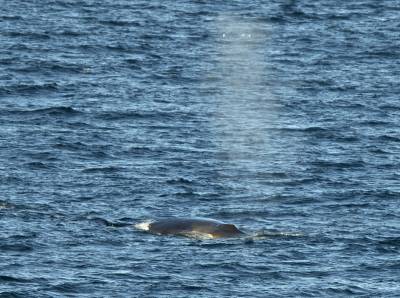
Hump-backed Whale inhaling off Spitsbergen (left) & Fin Whale blowing off Spitsbergen (right) © Jeff Clarke
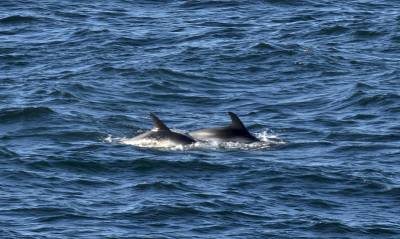
White-beaked Dolphins off Spitsbergen © Jeff Clarke

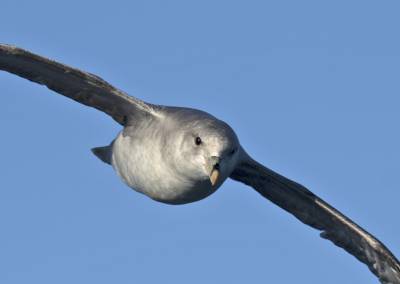
Northern Fulmars 'blue phase' dark form © Jeff Clarke
As we steamed south towards the Faroe Islands the following day we smacked into a force 6, touching 7 at times, with the consequent impact on whale and dolphin sightings. In contrast the next morning was significantly better with a force 3 and slight seas. I was up early with another couple of stalwarts when Pat picked up a splash dead ahead and we were duly rewarded with great views of 3 Northern Bottlenose Whales. I had hoped to pick up this species and was delighted to do so, as they represented my first confirmed sighting. My other banker for this leg had been Atlantic White-sided Dolphin. They did duly turn up – but their appearance coincided with me giving my fifth talk. C’est la vie.

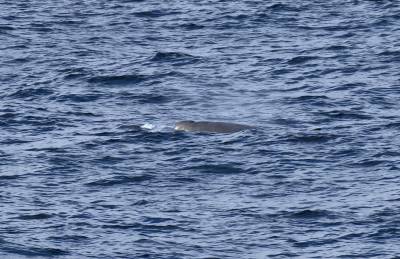
Northern Bottlenose Whale trio (left) & Northern Bottlenose Whale north of Faroe Islands (right) © Jeff Clarke
The Faroe Islands conjure up the idea of a remote population barely scratching an existence from the brutal landscape and wild ocean. The landscape is in large part vertiginously dramatic, and doubtless the ocean is often tumultuous. However, I must disavow any notion that the populace is in any way impoverished. They are as wealthy and endowed with as many luxuries as most western Europeans. They also slaughter thousands of Long-finned Pilot Whales and Dolphins annually by driving them onto beaches and cutting them to pieces. This was of course an important survival strategy for the Faroese fifty, or more, years ago. Not anymore! They claim it is tradition, if that’s the case let them use the rowing boats and sail boats their forefathers used, not multiple, powerfully engined craft they use to herd them to shore today. There is nothing traditional about the practice today. It belongs to another age. The Faroes is a modern society - it’s time it acted like one. I didn’t give up entirely on the Faroes, I looked for a whale and dolphin nature tour I could support. I couldn’t find one! I was left with the only choice of contributing not a single Kroner to the Faroese economy.

Layer Cake Geology in the Faroe Islands © Jeff Clarke
The Faroes are famous for fog. We got a lot of it and it hampered our viewing a we sailed away. Thankfully it gradually began to lift and we were immediately rewarded with a Humpback Whale very close to the ship on the starboard side. The sea remained wonderfully calm as the evening progressed and we steadily added more cetaceans, including 11 Minke Whale and 45 Harbour Porpoise, however the highlight for most people were the 4 Basking sharks cruising serenely by, mouths agape (the sharks not the people).
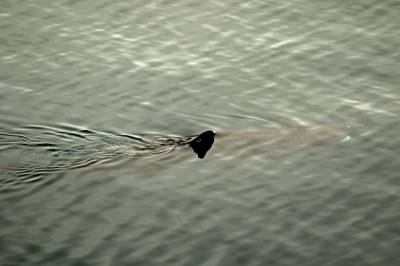

Basking Shark south of Faroe Islands (left) & Arctic Tern (right) © Jeff Clarke
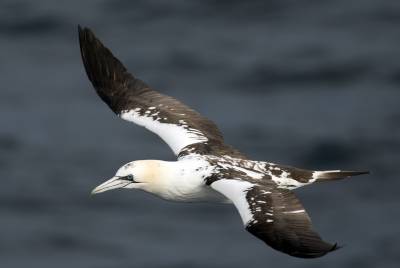
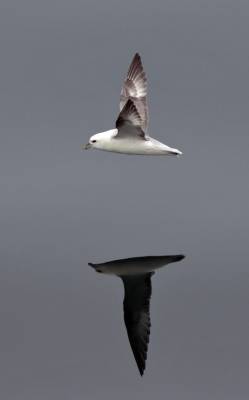
Northern Gannet 2nd to 3rd Calendar (left) & Northern Fulmar pale phase (right) © Jeff Clarke
The 11th July was our final day at sea. I arose early (4.20am) to do a deck watch, but our plans were thwarted as we were ahead of time and had already past Tiumpan Head on Lewis. Nevertheless, the Minch and Sea of Hebrides provided entertainment through the day despite moderate weather. The bird highlight was probably the one and only Sooty Shearwater of the trip, alongside over 1000 Manx Shearwater. Once again, the Short-beaked Common Dolphins came to ride Black Watch’s bow and another breaching Minke Whale entertained those on deck at the time.
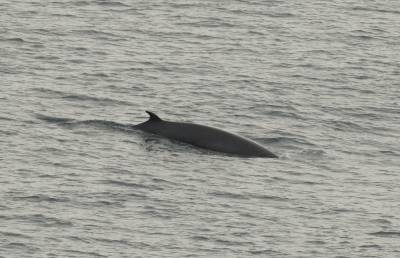

Minke Whale (left) & Short-beaked Common Dolphin - Sea of Hebrides (right) © Jeff Clarke

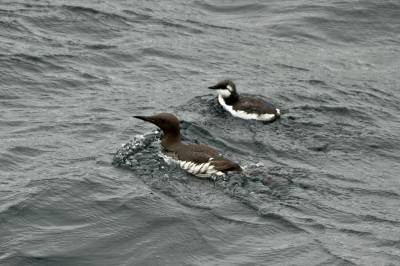
Manx Shearwater (left) & Common Guillemot Ad. male and chick (right) © Jeff Clarke
Overall it had been another Fantastic Tour on board Black Watch and I’m grateful to Fred. Olsen Cruise Lines and my agents at Peel Talent for providing me with the opportunity to act as Wildlife speaker on the tour. I’d also like to thank the staff and fellow speakers aboard Black Watch for their support, to the many wonderful passengers on board and most of all to my wife Adele. She has the patience of a saint!
Below I’ve listed the Marine Mammals recorded during the tour. The list is not complete.
Harbour Porpoise 225+
Short-beaked Common Dolphin 244+
Risso’s Dolphin 8
White-beaked Dolphin 149+
Atlantic White sided Dolphin 3+
Bottlenose Dolphin 7+
Unidentified dolphin sp. 12+
Orca 23+
Beluga Whale 5+
Northern Bottlenose Whale 3
Blue Whale 2
Fin Whale 38+
Northern Minke Whale 59+
Hump-backed Whale 46+
Unidentified Rorqual Whale 22+
Other
Walrus 1
Atlantic Grey Seal 113+
Harbour Seal 1
Ringed Seal 1+
Bearded Seal 1+
Polar Bear 1
Otter 3
Please Note: The views expressed in this blog are my own and nobody else’s


